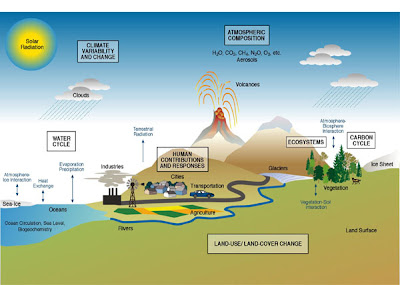[link]Best wap portal!:http://prodigits.co.uk/[/link]
Glaciology is an interdisciplinary earth science that integrates geophysics, geology, physical geography, geomorphology, climatology, meteorology, hydrology, biology, and ecology. The impact of glaciers on humans adds the fields of human geography and anthropology. The presence of ice on Mars and Europa brings in an extraterrestrial component to the field.
Zones of glaciers
· Accumulation, where the formation of ice is faster than its removal.
· Wastage or Ablation, where the sum of melting and evaporation (sublimation) is greater than the amount of snow added each year.
Movement
Ablation
wastage of the glacier through sublimation, ice melting and iceberg calving.
Ablation zone
Area of a glacier in which the annual loss of ice through ablation exceeds the annual gain from precipitation.
Arête
an acute ridge of rock where two cirques abut.
Bergshrund
crevasse formed near the head of a glacier, where the mass of ice has rotated, sheared and torn itself apart in the manner of a geological fault.
Cirque, corrie or cwm
bowl shaped depression excavated by the source of a glacier.
Creep
adjustment to stress at a molecular level.
Flow
movement (of ice) in a constant direction.
Fracture
brittle failure (breaking of ice) under the stress raised when movement is too rapid to be accommodated by creep. It happens for example, as the central part of a glacier movinges faster than the edges.
Horn
spire of rock formed by the headward erosion of a ring of cirques around a single mountain. It is an extreme case of an arête.
Plucking/Quarrying
where the adhesion of the ice to the rock is stronger than the cohesion of the rock, part of the rock leaves with the flowing ice.
Tarn
a lake formed in the bottom of a cirque when its glacier has melted.
Tunnel valley
The tunnel is that formed by hydraulic erosion of ice and rock below an ice sheet margin. The tunnel valley is what remains of it in the underlying rock when the ice sheet has melted.









